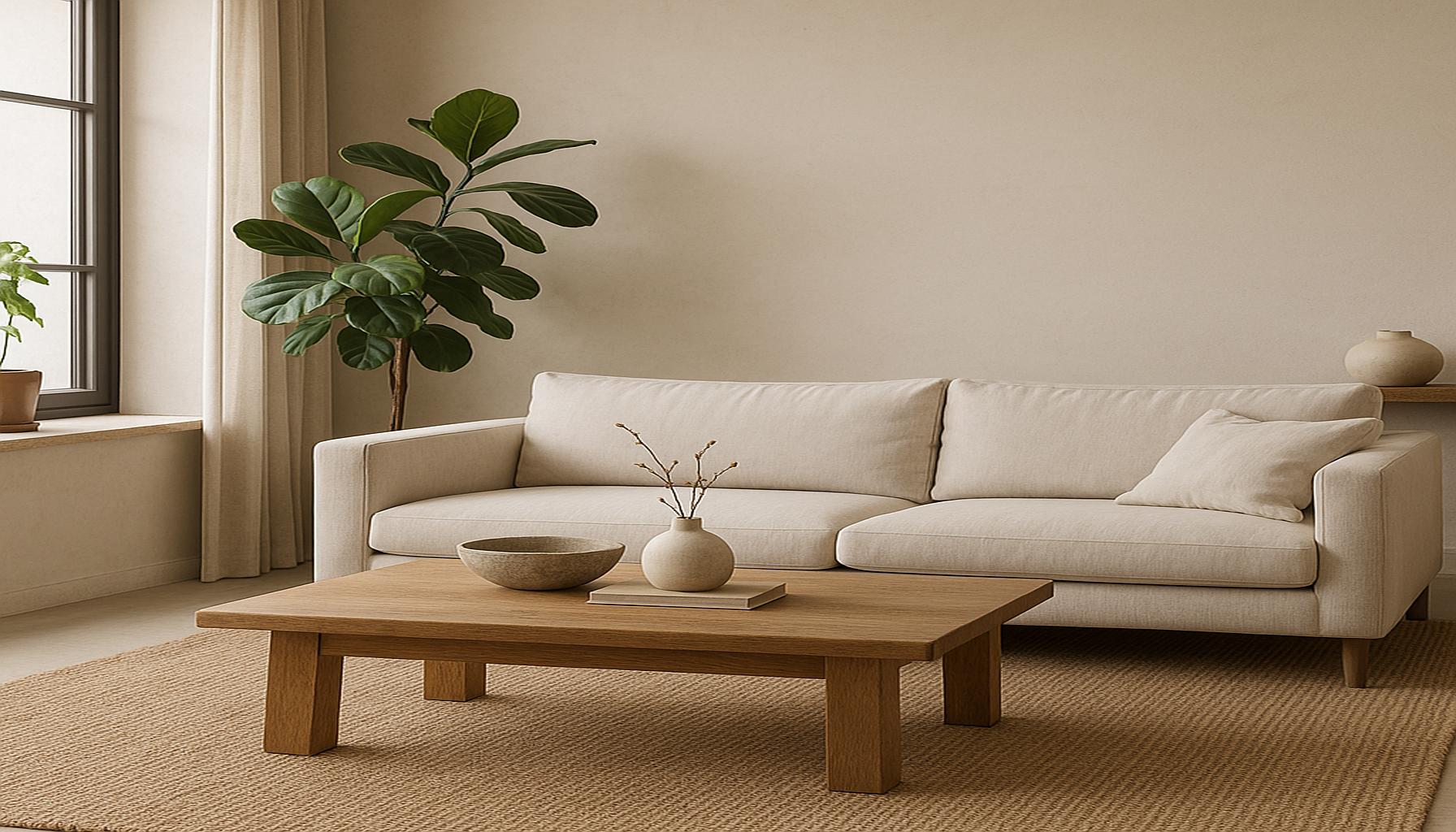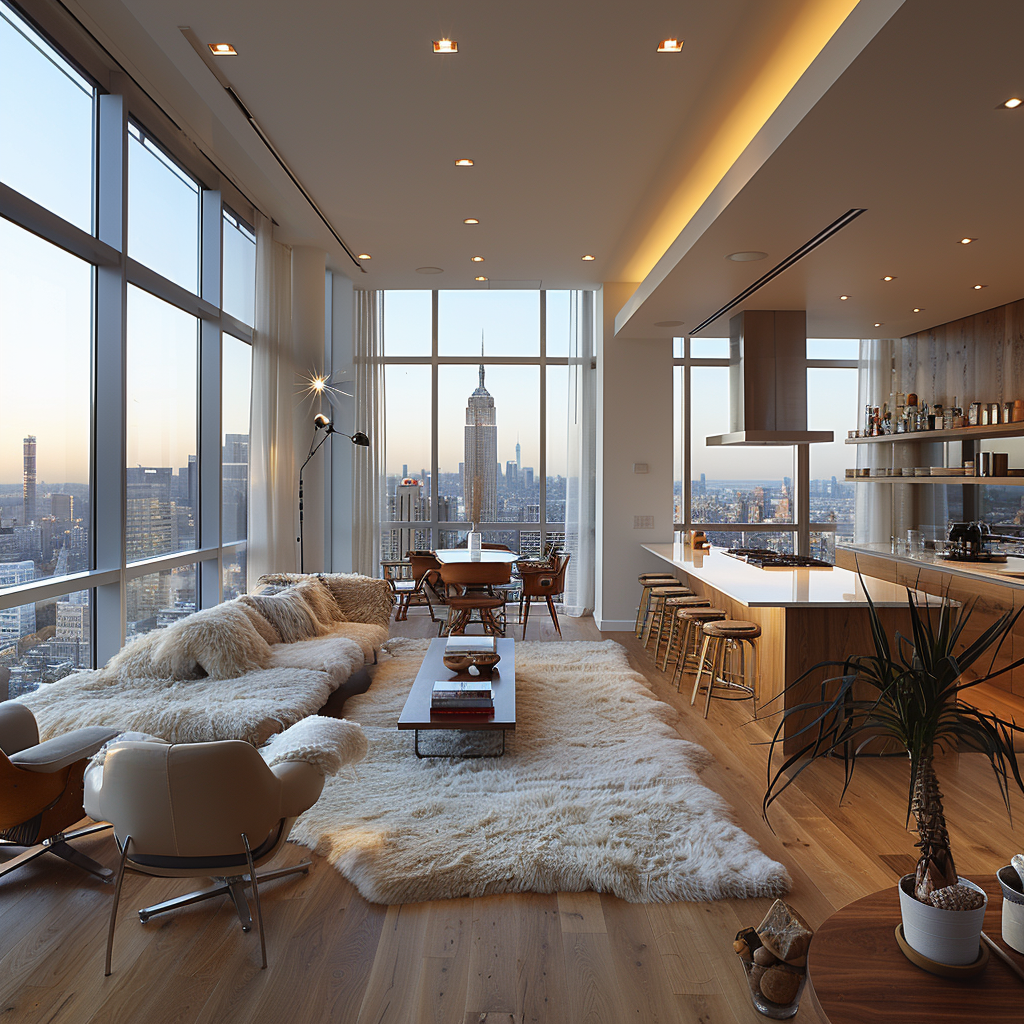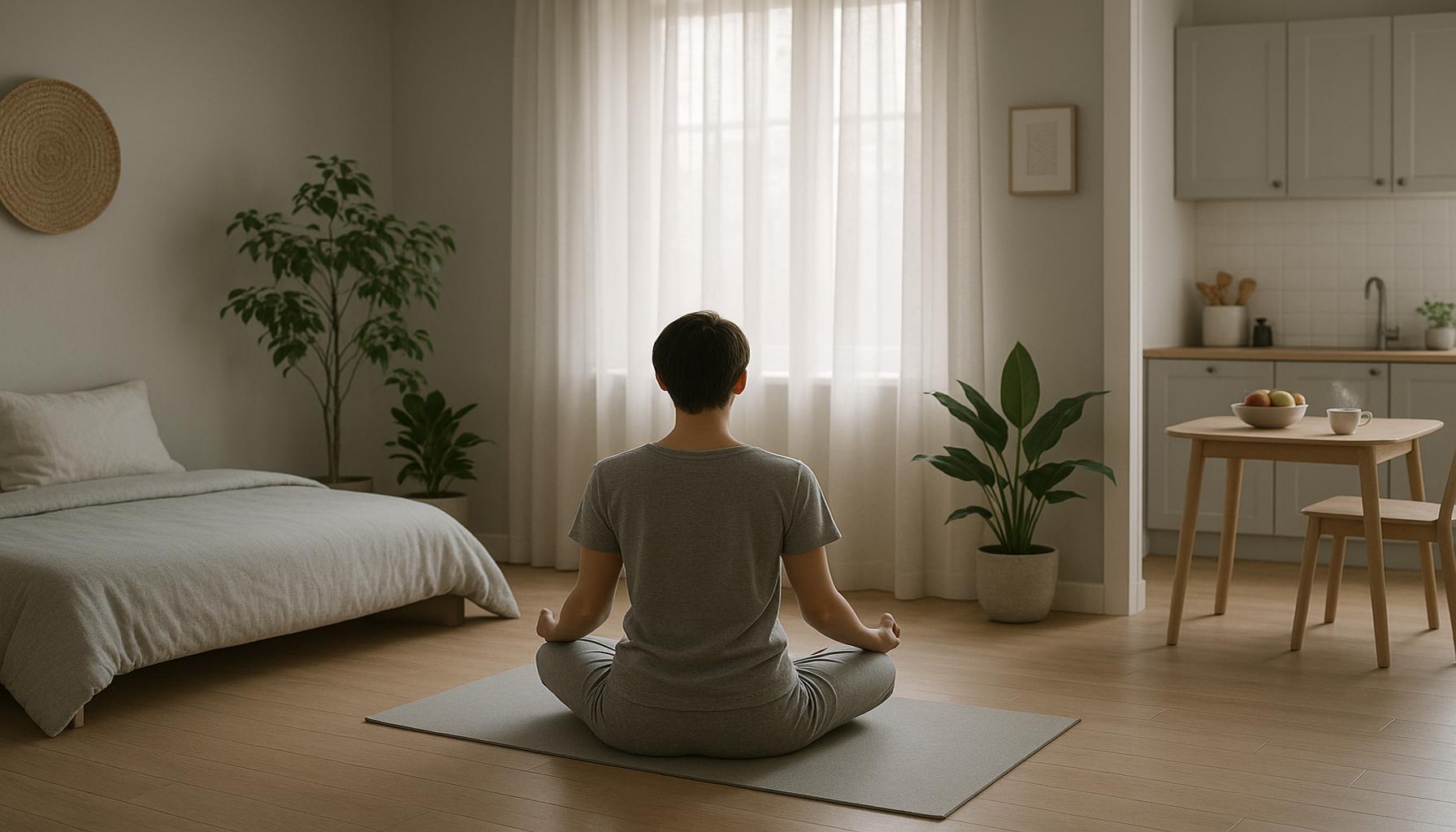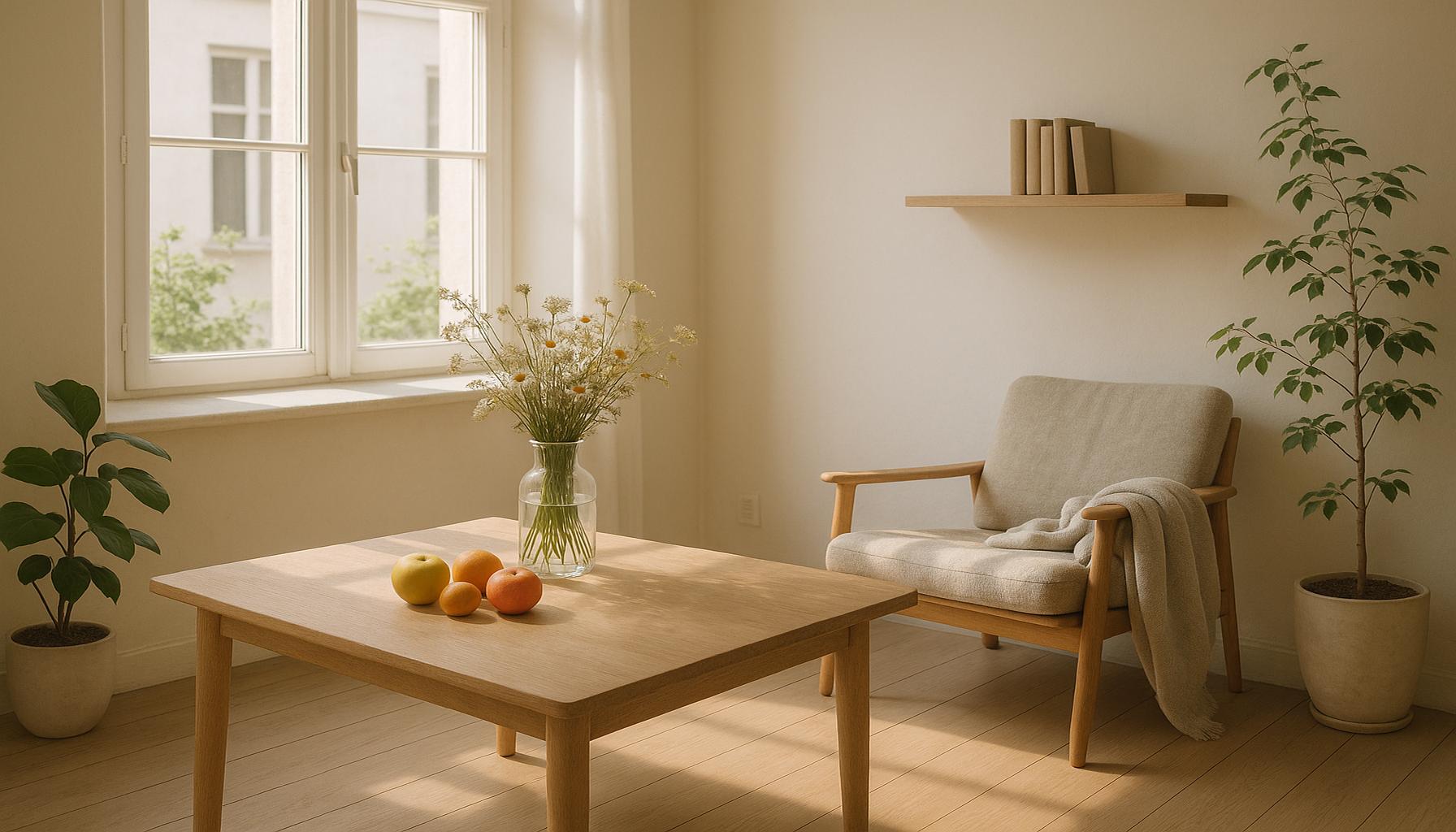The Power of Simplicity in Decoration: Creating Calm and Functional Environments with Less

Embracing Minimalism in Design
In today’s fast-paced world, the trend towards simplicity in decoration is gaining momentum. Homeowners and designers alike are discovering how less can truly be more, leading to spaces that radiate calm and functionality. Adopting a minimalist approach not only fosters tranquility but also enhances the way people interact with their environment.
Key Benefits of Simplicity in Decoration
- Promotes Relaxation: A clutter-free space encourages serenity and mental clarity. Studies have shown that environments filled with minimal items can reduce stress levels. For example, a living room designed with a few select pieces of furniture and soft, natural light can create a peaceful retreat from the chaos of daily life.
- Enhances Functionality: By prioritizing essential items, the environment becomes more practical. In a minimalist design, every piece of furniture should serve a purpose. For instance, a coffee table that doubles as storage can reduce clutter while still providing functionality, allowing for a more efficient area to gather with family or guests.
- Saves Time and Money: Fewer purchases and upkeep mean less financial strain. A minimalist lifestyle encourages thoughtful consumption, which can lead to a more sustainable way of living. By investing in higher-quality items that last longer rather than many cheaper items, homeowners can save both time and money over the long term.
- Showcases Personal Style: A minimalist decor can highlight unique pieces rather than distract from them. Instead of filling spaces with numerous decorations, homeowners can focus on a few statement items, such as an intricately designed lamp or a piece of art, that truly reflect their personality and taste.
From choosing a neutral color palette to utilizing multifunctional furniture, simplicity in decoration is about making intentional choices. By opting for calming shades like whites, beiges, and soft grays, individuals can create an atmosphere that feels open and inviting. Additionally, furniture that serves multiple purposes can significantly reduce the amount of items in a room, contributing to a cleaner, more organized appearance.
Implementing minimalist decor can drastically change not just physical spaces but also emotional well-being. Imagine walking into a home filled with sunlight and ample open space; this environment encourages relaxation and enhances creativity as opposed to one filled with overwhelming decor. As we delve deeper into the principles of minimalist design, we will uncover how embracing simplicity can lead to a more fulfilling and peaceful lifestyle.
Minimalism is not just a design choice but a way of life. The practice of decluttering can extend beyond furniture and decorations to also include digital spaces. Embracing a minimalist philosophy can inspire individuals to streamline their lives, focusing on what matters most to them. Embrace the journey toward simplicity, and you may find not just your home, but your entire life transformed significantly.
DISCOVER MORE: Click here to enhance your personal organization

The Essence of Minimalist Aesthetics
As the quest for simplicity unfolds, it becomes evident that minimalist aesthetics extend beyond mere visual appeal. They encapsulate a philosophy aimed at enriching everyday life. By narrowing down the number of objects in a space, individuals can foster a sense of peace that isn’t just about the physical environment, but also promotes mental clarity. This transition towards a simpler aesthetic is anchored by the principle that design should serve the inhabitants rather than overwhelm them.
Choosing Quality Over Quantity
At the core of a minimalist ethos is the commitment to quality over quantity. In a world where mass production leads to a surplus of available items, the notion of investing in fewer, high-quality pieces becomes integral. For example, rather than accumulating a wide array of average decorative items, thoughtful homeowners are more inclined to select a limited number of carefully crafted pieces that resonate with their personal taste. A stunning ceramic vase or a handcrafted wooden chair tells a story and becomes a conversation starter, infusing the space with character while maintaining a sense of openness.
Incorporating Natural Elements
Another hallmark of a minimalist decor includes the incorporation of natural elements into the design. Nature not only elevates the visual appeal of a space but also enhances well-being. Integrating plants, natural light, and organic materials can create a seamless flow between indoor and outdoor environments, reinforcing a sense of calm. Research suggests that exposure to nature can lead to reduced stress levels and improved focus, which makes the implementation of these elements all the more crucial in minimalist design.
Functional Spaces: The Multi-Use Revolution
In recent years, the trend of multifunctional spaces has gained traction, thereby reinforcing the principles of minimalist decoration. With many individuals now working from home, the necessity for spaces that can effortlessly transition between work, relaxation, and socializing has become paramount. Here are a few examples of how to achieve functional decoration:
- Convertible Furniture: Pieces like sofa beds or extendable dining tables can optimize space while serving multiple purposes.
- Open Floor Plans: Designing with a flowing layout enables various activities to occur in the same space, eliminating the need for additional rooms.
- Hidden Storage Solutions: Utilizing ottomans with storage or wall-mounted shelves helps maintain a clean aesthetic while offering practical solutions for organization.
These thoughtful implementations of functionality not only contribute to a more organized home but also create an inviting atmosphere that supports diverse activities. Embracing these minimalist principles allows individuals to immerse themselves in a space that is as calming as it is practical. As we delve deeper into the relationship between simplicity and well-being, it becomes increasingly clear that a minimalist approach to decoration can lead to profound benefits both mentally and physically.
The Appeal of Minimalism in Modern Living
As we navigate through the chaotic pace of contemporary life, the allure of minimalism stands out as a poignant reminder that less is indeed more. The power of simplicity in decoration offers a unique approach, creating not just visually appealing spaces but also fostering a sense of calm that many seek in their everyday lives.
Reducing Clutter for Mental Clarity
A key aspect of minimalist design is the intentional reduction of clutter. By focusing on essential items and eliminating the non-essential, individuals can create an environment that promotes mental clarity. The physical space around us reflects in our mental state; thus, a simplified environment can lead to enhanced productivity and lower stress levels.
Functional Design Elements
In minimalist interiors, every piece serves a purpose. Functional furniture and decor are prioritized, ensuring that each item fulfills a necessary role. This vision not only enhances the functionality of the space but also contributes to a more harmonious atmosphere, where distractions are minimized. By selecting items that blend utility with simplicity, homeowners can achieve a cohesive look while maintaining a high level of practicality.
The Role of Natural Materials
Incorporating natural materials into minimalist decor contributes to the focus on simplicity. Wood, stone, and cotton can infuse warmth and character into a stark space, creating a tranquil ambiance that invites relaxation. These elements connect us to nature and promote well-being, underscoring the importance of earth-centric design choices.
Color Palettes That Sooth
When it comes to color, minimalist designs favor muted palettes—think whites, grays, and soft earth tones. These tones create a serene backdrop that complements rather than overwhelms. The power of a well-chosen color scheme lies in its ability to evoke emotions and feelings, allowing for a sense of peace in one’s living quarters. By embracing subtle hues, designers can ensure that the focus remains on the simplicity and functionality of the space.
Incorporating Greenery
Bringing in plants is another effective method of achieving simplicity while enhancing the decor. Greenery not only adds a pop of color but also improves air quality and creates a connection to the outdoors. By strategically placing potted plants or employing vertical gardens, individuals can maintain a minimalist aesthetic while nurturing a vibrant, lively environment.
| Category | Benefits |
|---|---|
| Clutter Reduction | Promotes mental clarity and reduces stress |
| Functional Decor | Every piece serves a purpose and enhances practicality |
| Natural Materials | Creates warmth and fosters a connection to nature |
| Soothing Color Palettes | Evokes tranquility and focuses attention on essentials |
| Incorporating Greenery | Adds life and improves air quality in your space |
Embracing the power of simplicity in decoration is not merely a trend; it is a lifestyle shift that paves the way for more functional and peaceful environments. As the modern world evolves, the call for calming, efficient living spaces resonates louder than ever before.
DIVE DEEPER: Click here to discover the importance of clarity in design
Embracing a Color Palette of Tranquility
The visual impact of a well-chosen color palette cannot be understated when it comes to minimalist decoration. The strategic use of color in creating calm environments is a powerful tool in fostering a sense of serenity. Designers often recommend earth tones, muted pastels, and soft neutrals, which not only promote relaxation but also create a harmonious atmosphere within a space. For instance, a room painted in soft greens and beiges can evoke feelings of peace reminiscent of a tranquil forest.
The Psychological Effects of Color
Studies have shown that color psychology plays a significant role in how individuals feel within their environments. Colors such as blue and green are often associated with calmness and revitalization, while warmer hues like red may invoke energy or tension. By prioritizing warmer shades in smaller accents rather than larger areas, individuals can achieve a balance that maintains a peaceful demeanor without sacrificing personal expression. This delicate equilibrium allows one to appreciate the beauty of simplicity while avoiding visual chaos.
Decluttering as a Form of Decoration
In the journey toward minimalist decoration, the act of decluttering emerges not merely as a task but as an essential form of decoration itself. By consciously choosing to remove items that do not serve a function or hold sentimental value, spaces can be transformed dramatically. The Japanese concept of ‘Shinrin-yoku,’ or forest bathing, emphasizes the benefits of being in uncluttered, natural spaces, allowing for mindfulness and restoration. This philosophy can be employed in home settings, where every item should spark joy or serve a practical purpose.
Additionally, the decluttering process brings with it opportunities for innovation and creativity. Individuals are encouraged to think outside the box when it comes to storage solutions, opting for basket organizers, wall-mounted shelving, or even box-style furniture that complements a minimalist aesthetic while reducing visual clutter.
The Role of Lighting in Creating Atmosphere
Lighting is another critical element in embracing the power of simplicity in decoration. Well-designed lighting can significantly alter the ambiance of a space, transforming a minimalist room into a cozy sanctuary. Natural light, when maximized, encourages an open feel, making areas appear larger and more inviting. On the other hand, soft, warm artificial lighting can be strategically placed for evenings, allowing for a peaceful transition as the day winds down.
Furthermore, the use of dimmable lights or accent fixtures can provide versatility without overcrowding a minimalist space. By creating zones within a room through varying light levels, homeowners can enhance functionality while retaining a calming atmosphere.
Crafting Personal Spaces of Reflection
Ultimately, one of the most powerful aspects of minimalist decoration is its ability to create personal sanctuaries for reflection and mindfulness. Setting aside spaces dedicated to relaxation—whether a reading nook with a simple chair and good lighting or a meditation corner with minimal distractions—serves to enrich emotional well-being. Emphasizing simplicity does not require forgoing style; it only encourages a thoughtful approach to how each aspect of a room contributes to a larger narrative of peace and clarity.
By harnessing these various elements—from color and decluttering to strategic lighting and personal space creation—individuals can significantly enhance their living environments. The path to achieving calm and functional spaces lies in the deliberate choices made, showcasing how less truly can be more.
DISCOVER MORE: Click here to learn about the freedom of minimalism
Conclusion
In a world often flooded with distractions and visual overload, the power of simplicity in decoration emerges as a refreshing antidote. By prioritizing minimalism, we not only cultivate environments that promote calmness but also enhance functionality and emotional well-being. Each element—from the choice of a tranquil color palette to the art of decluttering—plays a pivotal role in shaping spaces that nurture serenity and reflection.
Through the understanding of color psychology, we can create atmospheres that uplift our spirits. The strategic use of lighting invites warmth and character into a room, allowing for both productivity and relaxation to thrive. Moreover, decluttering surfaces and spaces liberates not just physical areas but also mental ones, encouraging a clearer mindset that resonates throughout our daily lives.
As we embrace the philosophy of less is more, personal sanctuaries of peace can materialize in even the smallest of homes. From cozy reading nooks to serene meditation corners, the deliberate arrangement of our surroundings becomes a form of self-expression that fosters tranquility and clarity. Ultimately, the journey toward a minimalist aesthetic is not merely about the absence of items but the presence of intention, inviting us to consider how each choice impacts our experience within our spaces.
As we strive for simplicity, let us remember that creating calm and functional environments is not just an exterior transformation but a profound internal journey that sparks joy and promotes mindfulness. By embracing the art of simplicity, we open ourselves to a lifestyle marked by peace, balance, and harmony.


